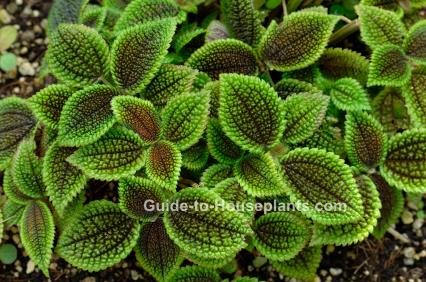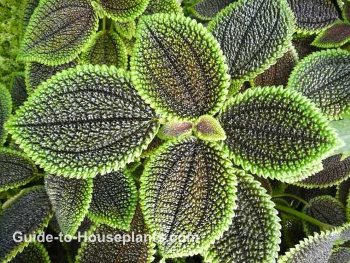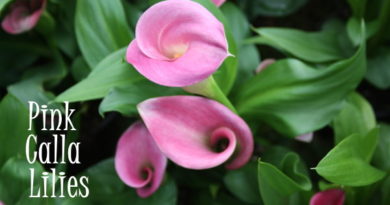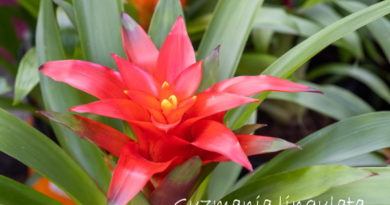Friendship Plant Care Tips – Pilea involucrata ‘Moon Valley’
Botanical Name: Pilea involucrata ‘Moon Valley’
Friendship Plant has quilted leaves of apple green with deep bronze veins that make it a joy to grow indoors.
Pilea is a genus of 100s of species, and this is one of the few grown as an indoor plant. One of the most popular cultivars is ‘Moon Valley’, shown here. It’s sometimes sold as Pilea mollis.

Green Thumb Tip
Pilea likes moist soil, warm temperatures and high humidity. Give this tropical plant what it wants and it’ll reward you with beautiful foliage. Be sure to root those cuttings and you’ll enjoy Friendship Plant for a long time.
‘Moon Valley’ has a more upright habit than the species, which is a trailing plant. Its toothed, deeply textured leaves feature dark-red undersides. Clusters of tiny, pink-green flowers may appear in spring, but they are insignificant compared to the showy foliage.
This is a bushy, fast-growing plant with ovate leaves that grow in opposite pairs. Pinch off growing tips, if you want, to keep the plant compact. Those cuttings will root easily, so don’t toss them out. Share them with friends or pot them up for more plants.
Dropped leaves can be caused by either dry or soggy soil. However, you can expect the lower leaves to fall off as plants get older, making them look leggy and unattractive. That’s another good reason to propagate stem cuttings for more plants — you may want to replace your plant after a few years.

Friendship Plant Care Tips
Origin: Central and South America
Height: Up to 12 in (30 cm)
Light: Moderate to bright light. Place your plant near a window, but away from direct sunlight, which can scorch its leaves. Give Pilea involucrata a quarter turn every few days to expose all sides to sunlight.
Water: Use a pot with drainage holes and water thoroughly. Allow water to drain, then empty drainage tray. Allow the potting medium to dry out a bit between waterings; Friendship Plant won’t tolerate soggy soil and may get root rot. Keep it slightly drier in winter, when growth is slower.
Humidity: High humidity is a must. If relative humidity drops below 50%, place pot on a tray of wet pebbles or use a cool-mist room humidifier. It makes an excellent terrarium plant.
Temperature: Average to warm room temperatures (65-80°F/18-27°C) suit this tropical plant. Keep it away from heat/AC vents or drafts from doors and windows. It will tolerate a low of 55°F/13°C in winter.
Soil: Peat moss-based mix or African violet potting mix.
Fertilizer: Feed monthly in spring and summer with a balanced (such as 10-10-10) water-soluble fertilizer, diluted by half.
Propagation: Take stem tip cuttings in spring. Put the stem in moist potting mix, then firm the mix around the stem so that it stands up. Enclose the whole pot in a plastic bag to hold in humidity. Cuttings root easily in about a month.




